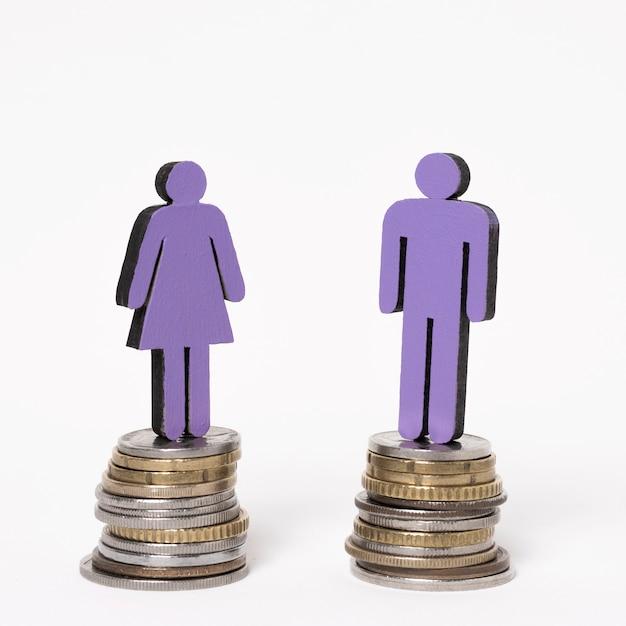Gender stratification is an issue that persists in our society, despite the progress we have made in promoting equality. In a world where gender-based discrimination continues to be a reality, it is important to raise awareness and understand the consequences of these unequal power dynamics.
Does inequality still exist today? The answer is an unfortunate yes. Women, in particular, face challenges and barriers that limit their opportunities and access to resources. This gender-based stratification not only affects individuals on an individual level but also has broader societal implications.
In this blog post, we will delve into the concept of gender stratification and explore its various aspects. We will examine the consequences of this inequality, explore the ways in which gender inequality is perpetuated, and discuss the role of education in reducing these disparities. Along the way, we will examine real-life examples of gender stratification and how it continues to shape our world in the year 2023.
So, let’s dive in and gain a deeper understanding of gender-based stratification in today’s society.

What is an Example of Gender Stratification?
Gender stratification refers to the unequal distribution of resources, privileges, and opportunities based on gender. Unfortunately, it’s still prevalent in many societies, including the United States. In this section, we’ll explore some concrete examples of gender stratification that shed light on the existing inequalities and the challenges faced by individuals due to their gender.
Workplace Disparities: Breaking the Glass Ceiling
One prominent example of gender stratification can be seen in the corporate world. Despite significant progress, women continue to face barriers to advancement, often referred to as the “glass ceiling.” This metaphorical barrier hinders women’s access to top-level positions and executive roles, perpetuating an imbalance of power and influence.
Wage Gap Woes: Unequal Pay for Equal Work
Another glaring example of gender stratification is the persistent wage gap. In the United States, women on average earn approximately 80 cents for every dollar earned by their male counterparts, with even wider disparities for women of color. This wage gap not only affects female employees’ financial well-being but also reinforces the societal devaluation of their work and skills.
Double Bind Dilemma: The Gendered Expectations
Gender stratification also manifests in the form of societal expectations and the “double bind” dilemma. Women often find themselves caught between conflicting expectations of femininity and career ambitions. On one hand, society pushes them to be nurturing and accommodating, while on the other hand, they are expected to be assertive and ambitious. Negotiating these contradictory expectations can be incredibly challenging and contribute to gender inequality.
Pink or Blue: The Toy Box Trap
Gender stratification starts early in life, and one prime example of this can be found in the toy industry. Walk into any toy store, and you’ll likely find that toys are still predominantly categorized as “for boys” or “for girls,” reinforcing societal gender norms. This not only limits children’s play choices but also perpetuates stereotypes by associating certain toys with specific gender roles and interests.
Media’s Machinations: Sexism in Entertainment
The media plays a powerful role in shaping societal norms, and unfortunately, it often perpetuates gender stratification through sexist portrayals. Women are often objectified, their worth reduced to their physical appearance or romantic relationships, while men are positioned as dominant and independent. Such depictions reinforce harmful stereotypes, impacting individuals’ perceptions and limiting their opportunities.
These examples of gender stratification highlight the ongoing inequalities faced by women in various aspects of life, including the workplace, wages, societal expectations, toys, and media representation. It’s crucial to recognize and address these issues to create a more inclusive and equitable society. By challenging and dismantling gender stratification, we can strive towards a future where opportunities and privileges are not determined by gender, but by individual abilities, talents, and aspirations.

FAQ: What is an example of gender stratification?
Does inequality still exist in today’s society
Inequality is still prevalent in today’s society, albeit in more subtle forms. While we have made significant progress in promoting gender equality, disparities continue to persist in various areas such as employment opportunities, wages, and representation in leadership positions. It is essential to continue working towards creating a more balanced and fair society.
What are the consequences of gender stratification
Gender stratification has far-reaching consequences that impact individuals and society as a whole. It perpetuates stereotypes, limits opportunities, and stifles the potential of individuals. Additionally, it contributes to economic disparities, social divisions, and even affects mental health and wellbeing. It is crucial to address gender stratification to build a more inclusive and equitable society.
How do you promote gender inequality
Promoting gender inequality is like trying to swim against the current of progress. While some may consciously or unconsciously hold biased views, society as a whole has recognized the importance of gender equality. However, there are still instances where gender inequality is perpetuated, such as through discriminatory hiring practices, unequal pay, and limited access to education or healthcare. Challenging these practices and advocating for equal opportunities is key to promoting gender equality.
Can education reduce gender inequality
Education plays a fundamental role in reducing gender inequality. By providing equal educational opportunities to all, regardless of gender, we can empower individuals to pursue their passions, goals, and aspirations. Education also fosters critical thinking, challenges gender norms and stereotypes, and promotes inclusivity. It is through education that we can empower future generations to build a more equal and just society.
What is an instance of gender stratification
One example of gender stratification is the underrepresentation of women in leadership positions. Despite making up a significant part of the workforce, women are still disproportionately represented in upper management and executive roles. This glass ceiling phenomenon not only hinders women’s progress but leads to an imbalance of power and decision-making. Addressing this issue is essential in achieving true gender equality.
What is gender-based stratification
Gender-based stratification refers to the division of society based on gender, where individuals are placed into hierarchies and given different access to resources, opportunities, and power based on their gender. This division creates inequalities and perpetuates stereotypes and discrimination. Addressing gender-based stratification requires dismantling systemic barriers and challenging societal norms that perpetuate inequality.
Do schools improve or reduce social inequality
Schools have the potential to both improve and reduce social inequality. On one hand, they can be instrumental in providing equal opportunities for all students, regardless of their background. By promoting diversity, inclusivity, and equity within the education system, schools can help level the playing field and empower marginalized groups. However, it is crucial to address issues such as biased curriculum, discriminatory practices, and socioeconomic disparities to ensure that schools truly reduce social inequality.
So there you have it! A comprehensive FAQ section that explores the various aspects of gender stratification. From highlighting the consequences to discussing examples and solutions, we hope to have enlightened you on the importance of striving for gender equality in our society.
